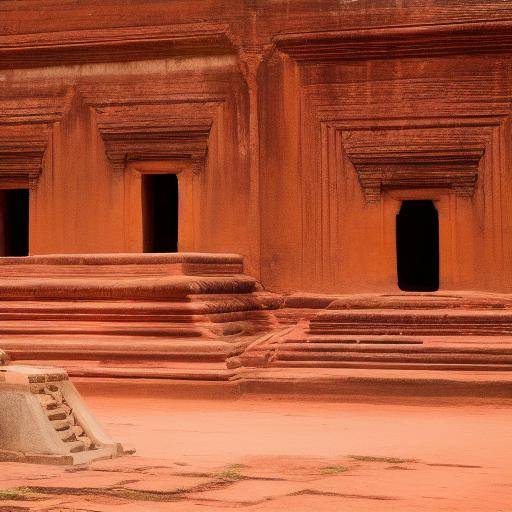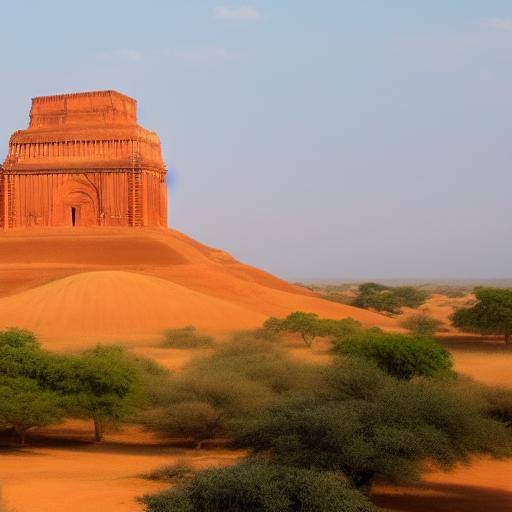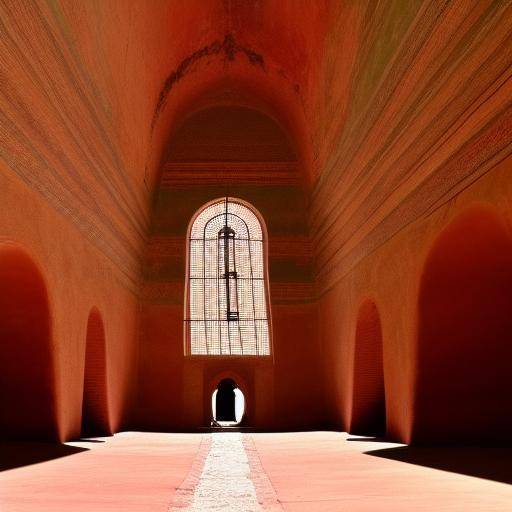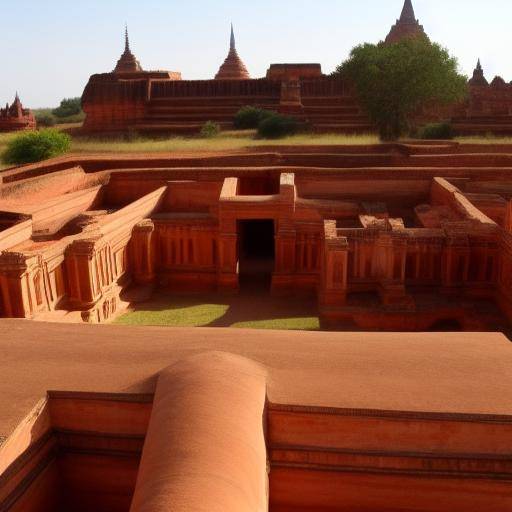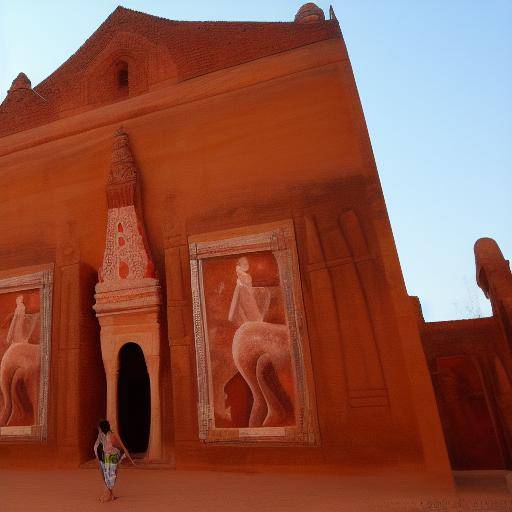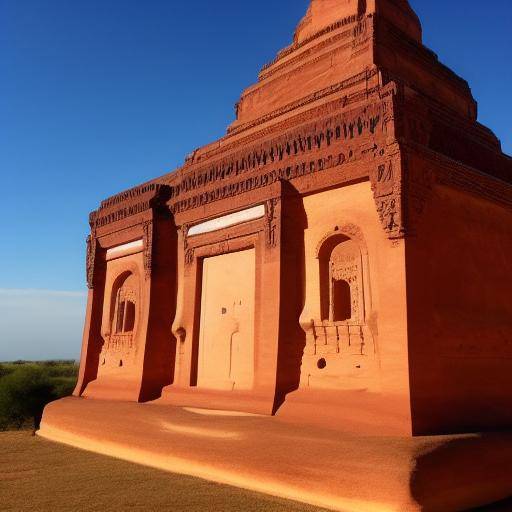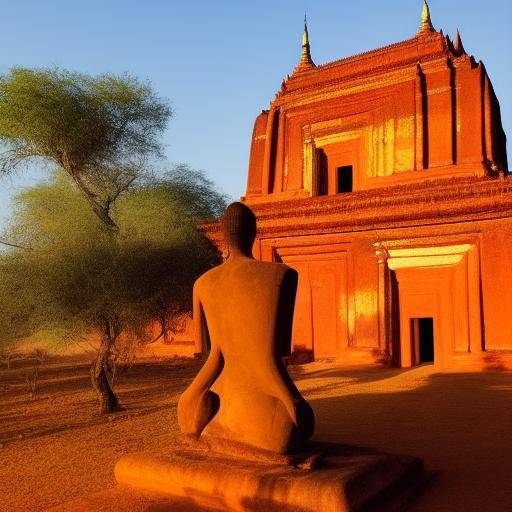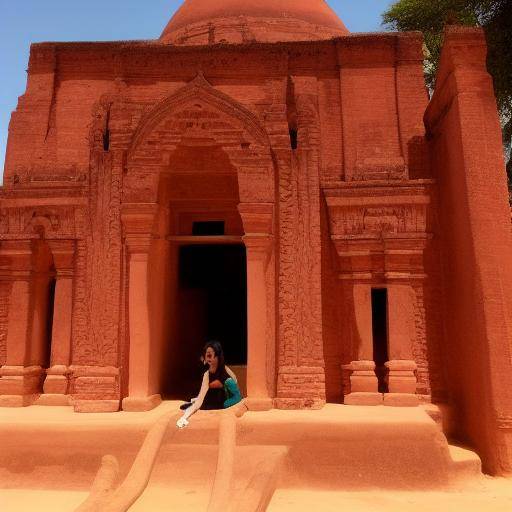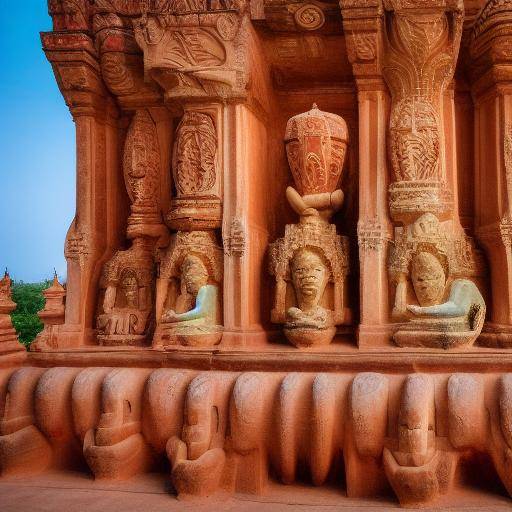
Introduction
The temples of Bagan in Myanmar are silent witnesses of an artistic and spiritual legacy that has endured for centuries, manifested in impressive murals, intricate sculptures and sacred relics. In this article, we will explore Burmese art in the temples of Bagan, its spiritual meaning and its impact on the expression of religious devotion. We will travel through time and space to discover the cultural and spiritual wealth that permeates this unique site. From the history and background of Bagan to contemporary trends and future predictions, this deep exploration will lead us to understand the importance of art in Burmese spiritual expression.
History and Origins of Bagan
The temples of Bagan, the epicenter of Burmese art, date back to the ninth century, when the kings and rulers of the Pyu dynasty began to erect religious monuments. These temples, which originally populated Bagan's flood plain, evolved over the centuries, reflecting the cultural and religious exchange between India, Sri Lanka, Thailand, and China.
The Bagan and Pagan dynasties, which ruled the region between the 11th and 13th centuries, were responsible for the construction of thousands of temples, creating a landscape that still amazes for its magnificence and artistic diversity. The stylistic influences of India, China, and Southeast Asia intertwined to shape a unique architectural and artistic style, reflected in the murals, sculptures and relics that adorn the temples.
Deep Analysis of Burmese Art in Bagan
Burmese art in the temples of Bagan is not only an aesthetic manifestation, but also a means through which spirituality and devotion are expressed. The murals represent scenes of Buddha's life, the Jatakas, and other Buddhist teachings, being not only an artistic expression, but also a visual teaching for the devotees.
The sculptures, ranging from small statuettes to imposing Buddha statues, capture the very essence of Buddhism, transmitting peace, compassion and wisdom through their symbolic forms and gestures. The sacred relics, such as relicaries and estupas, house the remains of saints and spiritual masters, serving as focal points for the meditation and veneration of believers.
Comprehensive Review of Spiritual Expression in Burmese Art
Art in the temples of Bagan is not only a relic of the past, but also a source of inspiration and reflection in the present. The devotion and spiritual meaning that are transmitted through these works of art continue to be fundamental in Myanmar's religious practice, being a living and vital part of Burmese culture.
The preservation and restoration of the sacred murals, sculptures and relics in the temples of Bagan represent a challenge and a responsibility, which requires a careful balance between the conservation of cultural heritage and the restoration of spiritual authenticity.
Comparative Analysis of Bagan, Burmese Art and Spiritual Expression
Compared to other religious sites in Southeast Asia, Bagan temples stand out for their profusion and artistic diversity. While some temples are known for their exceptional murals, others are venerated for their master sculptures or sacred relics.
Although they share common elements, such as the influence of Buddhist tradition, each temple has its own history and personality, reflected in its art and architecture. This diversity is a testimony to the spiritual and artistic wealth that permeates the Bagan region.
Practical Tips and Accessible Recommendations
If you plan to visit the temples of Bagan, we recommend taking enough time to appreciate the artistic and spiritual diversity they offer. Hiring a local guide can give you a deeper understanding of history and symbolism behind every work of art, giving you a more enriching experience.
In addition, it takes into consideration the importance of respecting sacred sites and following appropriate behavior patterns when visiting temples. Respect for local culture and religious practices is essential for meaningful and respectful experience.
Industry Perspectives and Expert Reviews
Experts on Burmese Art and Spiritual Expression highlight the importance of preserving and promoting Bagan temples as a heritage not only of Myanmar, but of all humanity. Sustainable conservation and responsible tourism are considered essential to ensure that future generations can enjoy and learn from this cultural treasure.
Case Studies and Practical Applications
Various conservation and restoration initiatives in Bagan temples have provided valuable lessons on the importance of balancing conservation efforts with sustainable development. Projects involving the local community have proved effective in fostering a sense of ownership and responsibility for cultural heritage, ensuring their long-term care.
Future Trends and Predictions
As Myanmar continues to open to tourism and cultural exchange, the temples of Bagan are expected to play an even more significant role as a spiritual and artistic destiny. The integration of conservation and presentation technologies can offer new ways of appreciating and understanding Burmese art, while sustainability efforts will ensure that this legacy lasts for future generations.
Conclusion
Art in the temples of Bagan is much more than an aesthetic expression; it is a link between the past and the present, a testimony of faith and devotion that transcends time. In exploring the history, the spiritual meaning and the contemporary impact of this Burmese art, we immerse ourselves in a universe of beauty and meaning that invites us to reflect on the very essence of humanity.
Frequently asked questions
**1. What is the importance of the temples of Bagan in the history of Myanmar?**The temples of Bagan are fundamental in the history of Myanmar, serving as silent witnesses of the country's rich cultural and spiritual heritage. Its meaning transcends the merely historical, being a symbol of identity and devotion.
**2. What are the most outstanding features of Burmese Art in Bagan?**Burmese art in Bagan is distinguished by its detailed murals, elaborate sculptures and sacred relics that reflect the Buddhist spirituality and artistic creativity of the region.
**3. How has Burmese Art influenced Myanmar's spiritual expression?**Burmese art, especially in the temples of Bagan, has served as a means of expressing the faith and devotion of local communities, transmitting Buddhist teachings and spiritual values through their beauty and symbolism.
**4. How can I contribute to the preservation of Bagan temples?**To contribute through responsible tourism, respecting visiting rules and supporting local conservation and restoration initiatives are important ways to contribute to the preservation of temples.
**5. What are the expectations for the future of Bagan temples?**Bagan temples are expected to remain a prominent cultural and spiritual destination, integrating sustainable practices and innovative technologies to ensure their preservation and accessibility.
**6. Why is it important to appreciate and render Burmese art in its spiritual context? Appreciating and understanding Burmese art in its spiritual context allows us to connect with a millennial tradition that transcends cultural and linguistic barriers, inviting us to contemplate the universality of human expression through art and faith.
With this integral exploration of art in the temples of Bagan, we have unraveled the cultural and spiritual richness that permeates these architectural wonders. From its history to its contemporary impact, Burmese art in Bagan offers us a window into an ancient, but eternally relevant tradition.

